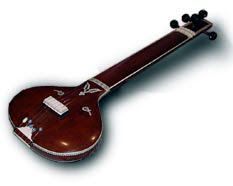Once upon a time, there lived a farmer called John Smith. His cattle farm was famous all over Jersey, and he frequently won prizes in cattle shows in English Fairs. Time went by, and his handsome young son Peter broached the subject of his own future. He had heard good things about the grasslands, snow mountains and sunny beaches of New Zealand. Soon, with his father's blessings, a dozen cows and a couple of bulls, Peter sailed to New Zealand.
Father Time now makes a fast forward and we come to this century. There is no doubt Japan faces economic troubles, but every dinner table is still laden with Kobe Corn Beef or Peter's Angus. So it turns out that around the Lunar New Year, a worthy successor to the Jersey ancestry tickles Japanese taste buds and also lends her hide to the flourishing sea trade between Matsumoto of Kobe and Shin Tsui of Sichun. The ship itself is owned and run by Park of South Korea.
Tsui's nephew started a belt and shoe factory recently, and has won laurels from famous labels like Pierre Cardin. He makes lovely belts, with good grained cow hide, and it fetches him a princely sum of $2.50 per belt. He doesn't have to buckle up, as the Cardin brand gets the buckles from Italy itself.
Soon after being buckled, a 115cm long gleaming formal black men's belt makes its trip to Missassuaga in Canada. Just in tiime for the stimulus-driven Christmas season.
And what happens next? A handsome young statistician is shopping around in Toronto's biggest mall with his lovely wife. And he happens to see s sweaty fat salesman at the Men's Accessories counter! Voila! The statistician thinks of his brother in law (or Co-brother as Indians specify more exactly) with his vast girth crying for better upholstery.
The Pierre Cardin is taken and paid for, and thrown into the suitcase in a hurry since this B-in-L can't get a visa to cross over from Buffalo. The statistician makes some fast math and concludes he should drive his Hybrid Camry all at once to catch the distressed man. So they meet, hug and the statistician calculates in his mind that the bell curve for men's bulging torsos needs to be recast quickly to accommodate the muffin top like his B-in-L. But then, his estimation skills have served him right and 115 cm looks rather a good fit for the bulge losing its battle.
Bingo! After a lovely Indian temple orbit weekend tour, the US of A's international conclave bringing together a B1 Indian passport holder from Australia and a statistician from Canada concludes. And the B-in-L flies back on a reluctant United who do their best to lose his bag and delay his flight. But he is an intrepid B1 you see and so does make it back to Parramatta. The very next weekend, he wants to get his belt on. He finds that the holes are not right as his torso has shrunk a bit after the United experience. So he goes to the Westfield mall, gets some extra holes punched by a Czech and Fiji partnership shoe repair team, and is all set to shine in his new upholstery, the Jersey-Angus-Peter-NZ-Kobe-Japan-Korea-SiChun-Milano-Toronto-Statistician- Aussie- Czech-Fiji-Indian B-in-L-Buffalo belt!!!!!

























